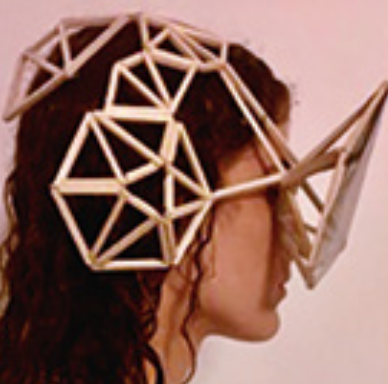Information and Digital Competencies as vectors for creativity and collaborative learning in the design process
Main Article Content
Abstract
This academic experience was developed due to a not foreseen change in the traditional didactic of the course: three-dimensional design fundamentals, as a result of the suspension of face-to-face classes at the Pontificia Universidad Católica del Perú, caused by the natural disasters of the “el niño costero” phenomenon. To overcome this complication–which lasted five weeks– and counted with the participation of 34 students, and two teachers in charge, it was proposed to integrate the platform of the social network facebook, as a non-formal electronic forum. The objective was to share information, develop creativity and encourage collaborative learning in the design process to solve an unstructured problem. With this purpose, guidelines were established on the use and interaction of the students in the platform, in order to maintain a reticular link and an order in the publication of comments and information. During the design process, there were collaborative design stages among the students, use of information and communication technology (ICT) resources to search and identify quality information, document the processes, adapt and share data and information, and get feedback from other study partners, activating autonomous learning and, collaboratively, build an educational network with the student as the protagonist. The results were significant, considering satisfactory levels within several variables such as: communication, opportunity in the use of digital tools, collaborative work, originality and creativity in the design of products.
Article Details
References
Álvarez Bonilla, F., Bartra Gros, F., López Meneses, E., & Sandoval Romero, Y. (2015), "Experiencias universitarias en escenarios virtuales formativos". Extraído el 2 de noviembre del 2017 desde https://s3.amazonaws.com/ academia.edu.documents/46737527/Experiencias_del_ Entorno_Virtual_de_Aprendizaje_en_Ecuador.pdf?AW SAccessKeyId=AKIAIWOWYYGZ2Y53UL3A&Expires=15 11639339&Signature=ujACuyc1Y1fJfPfcmLgI5roTD1w% 3D&response-content-disposition=inline%3B%20filename% 3DExperiencias_del_entorno_virtual_de_apre.pdf
Ames, P. (2014), "Niños y jóvenes frente a las nuevas tecnologías: acceso, y uso de tecnologías educativas en las escuelas peruanas". Extraído el 20 de abril del 2017 desde http://www.oei.es/congreso2014/contenedor. php?ref=memorias
Castells, M. (2013), "El impacto de internet en la sociedad: una perspectiva global". En: Ch@nge (6ta ed.). Extraído el 20 de abril del 2017 desde https://www.bbvaopenmind. com/wp-content/uploads/2014/03/BBVAComunicaci% C3%B3n-Cultura-Manuel-Castells-Elimpacto- de-internet-en-la-sociedad-una-perspectivaglobal. pdf
Freire, J. (2009), "Cultura digital y prácticas creativas en educación", Revista de Universidad y Sociedad del Conocimiento (RUSC), no 6. Extraído el 30 de junio del 2017 desde http://rusc.uoc.edu/rusc/es/index.php/rusc/ article/view/v6n1-freire.html
Travaldo, S. (2014), "La era del aprendizaje en red", Revista Aprender para Educar con Tecnología, no 8, mayo 2014, ISSN 2344-9659. Extraído el 30 de junio del 2017 desde http://www.academia.edu/9193091/Hacia_una_ educaci%C3%B3n_abierta._Nuevos_escenarios_para_el_ aprendizaje_en_red_y_ubicuo
Vuopala, E., Hyvönen, P. & Järvelä, S. (2016), "Interaction Forms in Successful Collaborative Learning in Virtual Learning Environments", Active Learning in Higher Education, 17(1), 25-28. doi: 10.1177/1469787415616730


